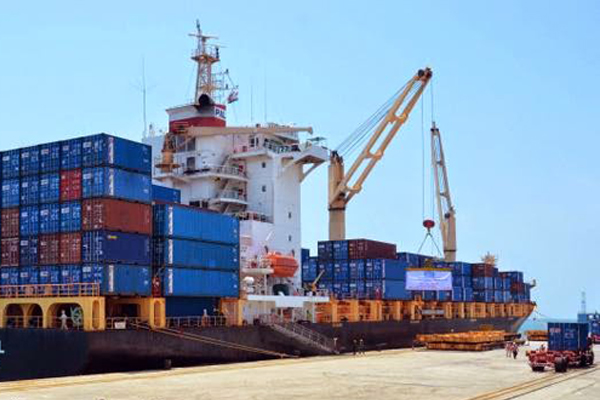
Indian Steel Ministry Proposes Port of Entry Restrictions to Curb Imports

The proposal was mooted recently by the steel ministry in a meeting with its commerce counterpart in which the measures, both tariff and non-tariff, that may be taken to reduce unnecessary steel imports and boost exports were discussed at length.
While some claim that port of entry measure makes importation more burdensome and thus constitutes a de facto import restriction; others feel the port of entry measure does not have a significant negative impact on legitimate trade but is effective in combating smuggling and under-invoicing.
India has become a net importer of steel after a gap of three years. Imports were high primarily due to predatory imports from excess steel producing nations such as China, Japan and Korea. This has rekindled the spectre of 2015-16 among the steelmakers.
While Indian steelmakers are not opposed to imports of some high-value data-x-items as domestic productions are not sufficient; they are in a tizzy because of growing inward flow of some basic products such as wire rod and other construction items.
The steel ministry suggests that there are few genuine reasons for introduction of port of entry restrictions as this would reduce port congestion given Indian ports' limited cargo-handling capacity. The move would augur well for the environment as well.
It also argued that with the port of entry restrictions in place, products such as scrap and defective steels can only be imported through certain ports as only some ports will have testing facilities.
Recently JNPT and ICD Tuglakabad were added in the list of ports for importing defective data-x-items of steel. India imports defective coated flats, tinplates and others worth about INR 1,500 crore a year.



Trump weighs using $2 billion in CHIPS Act funding for critical minerals

Codelco cuts 2025 copper forecast after El Teniente mine collapse

Electra converts debt, launches $30M raise to jumpstart stalled cobalt refinery

Barrick’s Reko Diq in line for $410M ADB backing

Abcourt readies Sleeping Giant mill to pour first gold since 2014

Nevada army depot to serve as base for first US strategic minerals stockpile

SQM boosts lithium supply plans as prices flick higher

Viridis unveils 200Mt initial reserve for Brazil rare earth project

Tailings could meet much of US critical mineral demand – study

Kyrgyzstan kicks off underground gold mining at Kumtor

Kyrgyzstan kicks off underground gold mining at Kumtor

KoBold Metals granted lithium exploration rights in Congo

Freeport Indonesia to wrap up Gresik plant repairs by early September

Energy Fuels soars on Vulcan Elements partnership

Northern Dynasty sticks to proposal in battle to lift Pebble mine veto

Giustra-backed mining firm teams up with informal miners in Colombia

Critical Metals signs agreement to supply rare earth to US government-funded facility

China extends rare earth controls to imported material

Galan Lithium proceeds with $13M financing for Argentina project

Kyrgyzstan kicks off underground gold mining at Kumtor

Freeport Indonesia to wrap up Gresik plant repairs by early September

Energy Fuels soars on Vulcan Elements partnership

Northern Dynasty sticks to proposal in battle to lift Pebble mine veto

Giustra-backed mining firm teams up with informal miners in Colombia

Critical Metals signs agreement to supply rare earth to US government-funded facility

China extends rare earth controls to imported material

Galan Lithium proceeds with $13M financing for Argentina project

Silver price touches $39 as market weighs rate cut outlook

















